10 Top-Rated Ideogram AI Alternatives
Written by: Hrishikesh Pardeshi, Founder at Flexiple, buildd & Remote Tools.
Last updated: Mar 24, 2025

Top 10 alternatives to Ideogram are:
leonardo.ai
photosonic.ai
getimg.ai
designify.ai
fusionbrain.ai
hotpot.ai
artsmart.ai
designs.ai
zmo.ai
fluxaiimagegenerator.com
AI-driven image generation is revolutionizing the creative landscape. This article explains what Ideogram is and presents an in-depth review of its top alternatives. Readers will discover Ideogram’s core functionalities, benefits, and limitations while learning how its innovative approach transforms text into visually stunning artwork. In addition, the post explains why many creative professionals choose Ideogram and why some look for alternative solutions.
Detailed comparisons across features, pricing structures, and usability aspects equip digital artists, marketers, and content creators with the insights needed to select the perfect AI-driven image generation tool. With clear explanations of key features, pros and cons, and user recommendations for each alternative, this guide ensures an informed decision to boost your creative workflow using advanced AI tools.
Table of Contents
What Is Ideogram?
Ideogram is an AI-powered platform that leverages artificial intelligence to convert text prompts into artistic, high-quality images using advanced machine learning algorithms. It is designed for graphic designers, digital marketers, and creative professionals who require rapid, customizable visual content. Ideogram streamlines the creative process with an intuitive interface that allows users to generate visuals that accurately reflect their ideas. The platform supports extensive personalization—from adjusting color palettes and styles to fine-tuning intricate details—ensuring every image is uniquely tailored to its purpose.
With robust real-time editing tools and a vast library of templates, Ideogram is ideal for a range of applications, including social media graphics, digital advertisements, and experimental art projects. Its innovative technology and reliable performance have made it a trusted solution in competitive creative environments.
Key Features of Ideogram
Key Features of Ideogram include advanced text-to-image conversion that transforms descriptive prompts into vivid, high-resolution AI-generated images using deep neural networks; a comprehensive template library offering fully customizable starting points for a variety of projects; real-time editing tools that allow instant adjustments to brightness, contrast, and saturation; and intelligent AI algorithms that continuously learn from extensive datasets to capture subtle details and enhance image quality.
Advanced Text-to-Image Conversion with AI Image Generator
Ideogram’s core function is to generate images by converting descriptive text into vivid visuals. Using deep neural networks, it interprets every word to produce visuals with accurate color, composition, and style. This process enables designers to see their ideas come to life almost instantly, streamlining creative workflows and reducing manual editing time. The system’s precision ensures high-resolution outputs that meet professional standards, making it ideal for digital marketing, social media, and artistic projects.
Comprehensive Template Library
The platform features a wide array of templates that empower users to create images for diverse projects. Each template is fully customizable, enabling users to modify elements such as layout, color scheme, and typography. This vast library accelerates the design process, providing a consistent, professional look while allowing creative flexibility for unique projects.
Real-Time Editing Tools
Real-time editing in Ideogram allows users to instantly adjust images after generation. Tools for modifying brightness, contrast, and saturation ensure that designs can be fine-tuned quickly. This capability enhances productivity and enables rapid iteration, which is especially valuable when working under tight deadlines. Additionally, the background removal feature allows users to quickly eliminate unwanted backgrounds from images, making the editing process even more efficient.
Intelligent AI Algorithms
The advanced generative AI algorithms behind Ideogram continuously learn and improve from vast datasets. These algorithms ensure that subtle details in the input text are reflected in the final image, resulting in outputs that are both innovative and precise. This continuous improvement makes Ideogram a powerful tool for generating high-quality digital art.
Pros & Cons
Evaluating the advantages and disadvantages helps users decide if Ideogram fits their creative needs. Most users report high satisfaction with Ideogram, citing its ease of use and robust features.
Pros
High-Quality Outputs: Consistently produces detailed, vibrant images.
User-Friendly Interface: Simplifies complex creative processes for all skill levels.
Extensive Customization: Offers robust editing and personalization options.
Fast Processing: Quickly converts text to high-resolution images.
Cons
Premium Pricing: Advanced features require a higher subscription fee.
Steep Learning Curve: Some sophisticated tools take time to master.
Limited Free Access: Basic functionality is restricted without a subscription.
Occasional Delays: Users can experience processing lags during peak usage.
Ideogram AI Alternatives can help you turn words into striking visuals. If you are looking for comprehensive brand creation, check out the Top Designs AI Alternatives.
Why Do People Love Ideogram?
People love Ideogram because it is an innovative platform that transforms creative ideas into stunning, professional visuals with efficiency and ease.
Consistent, High Quality Images
People love Ideogram because it delivers consistently high-quality images that satisfy professional standards. Its precise algorithms ensure every design is detailed and visually appealing, reducing the need for extensive post-processing.
Intuitive Content Creation Experience
People love Ideogram because its user-friendly interface simplifies the complex process of digital art creation. Clear controls and guided workflows enable both novices and experts to generate impressive visuals effortlessly.
Cutting-Edge Innovation
People love Ideogram because it integrates the latest AI technologies to push the boundaries of digital art. Its ability to adapt and improve continuously inspires users to experiment with new creative techniques.
Efficient Creative Workflow
People love Ideogram because it seamlessly integrates into existing design workflows. Fast processing speeds and real-time editing features help users meet tight deadlines while maintaining creative control.
Why to Look for Ideogram Alternatives?
Users look for Ideogram alternatives because different platforms offer unique features and pricing models that may better suit specific creative projects.
Diverse Pricing Structures
Users search for alternatives when they need flexible pricing options that accommodate different budgets. Some alternatives provide cost-effective solutions for freelancers and startups.
Specialized Functionality
Some users seek alternatives that offer niche features—such as advanced photo editing or unique artistic filters—not available on Ideogram, allowing for tailored creative outputs.
Enhanced Customization
Alternatives can provide more granular control over image creation, allowing users to fine-tune every detail to meet their exact creative vision. This level of customization is crucial for high-end projects.
Improved Customer Support
Many alternatives offer robust customer support and extensive learning resources. This support can help users overcome technical challenges quickly and maximize the tool’s potential.
Top 10 Ideogram Alternatives
Here is an in-depth review of 10 top alternatives to Ideogram, each featuring a powerful AI image generator. Each alternative is described with its purpose, key features, pros and cons, and guidance on who will benefit most.
1. leonardo.ai
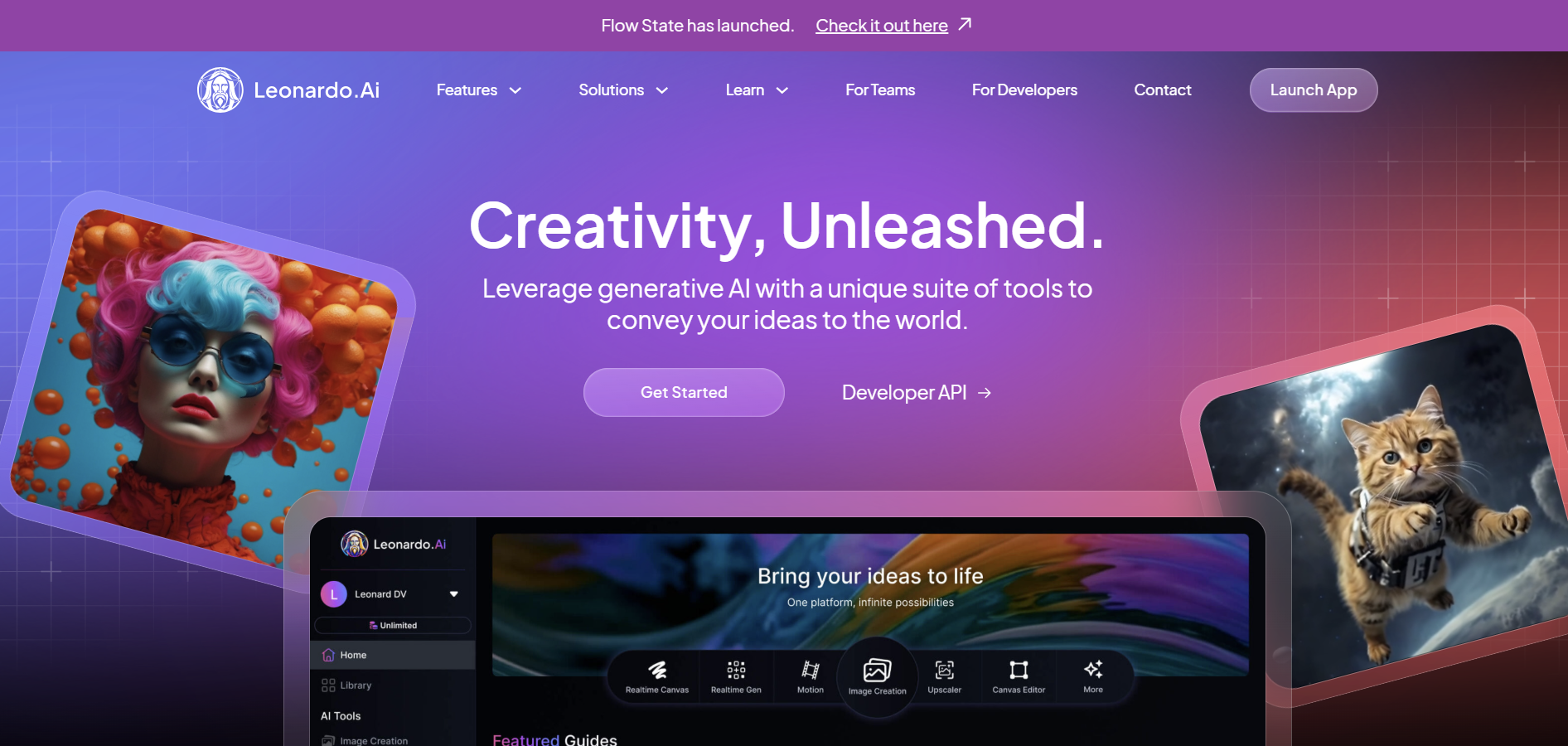
Leonardo.ai is a sophisticated AI image generator platform that transforms text prompts into high-quality, creative images. It caters to graphic designers, digital marketers, and creative professionals who need rapid, customizable image generation. Leonardo.ai combines an intuitive interface with powerful processing capabilities to deliver professional-grade visuals that support a wide range of applications, from social media graphics to detailed digital artwork.
Key Features
A brief look at what makes leonardo.ai stand out.
Accurate Text-to-Image Conversion : Delivers detailed images based on textual inputs.
Extensive Template Library : Provides a variety of customizable design options.
Advanced Customization Tools : Allows precise adjustments to enhance images.
Real-Time Editing : Enables immediate modifications for perfect results.
Pros & Cons
Understanding its strengths and limitations:
-
Pros :
Consistent high-quality visuals.
User-friendly interface.
Extensive design flexibility.
Rapid processing speed.
-
Cons :
Premium subscription pricing.
Steep learning curve for advanced tools.
Limited free access.
Occasional processing delays.
Who Should Use Ideogram?
Ideal for:
Graphic designers seeking innovative visuals.
Digital marketers needing on-brand imagery.
Content creators requiring engaging graphics.
Creative agencies focusing on professional output.
2. photosonic.ai
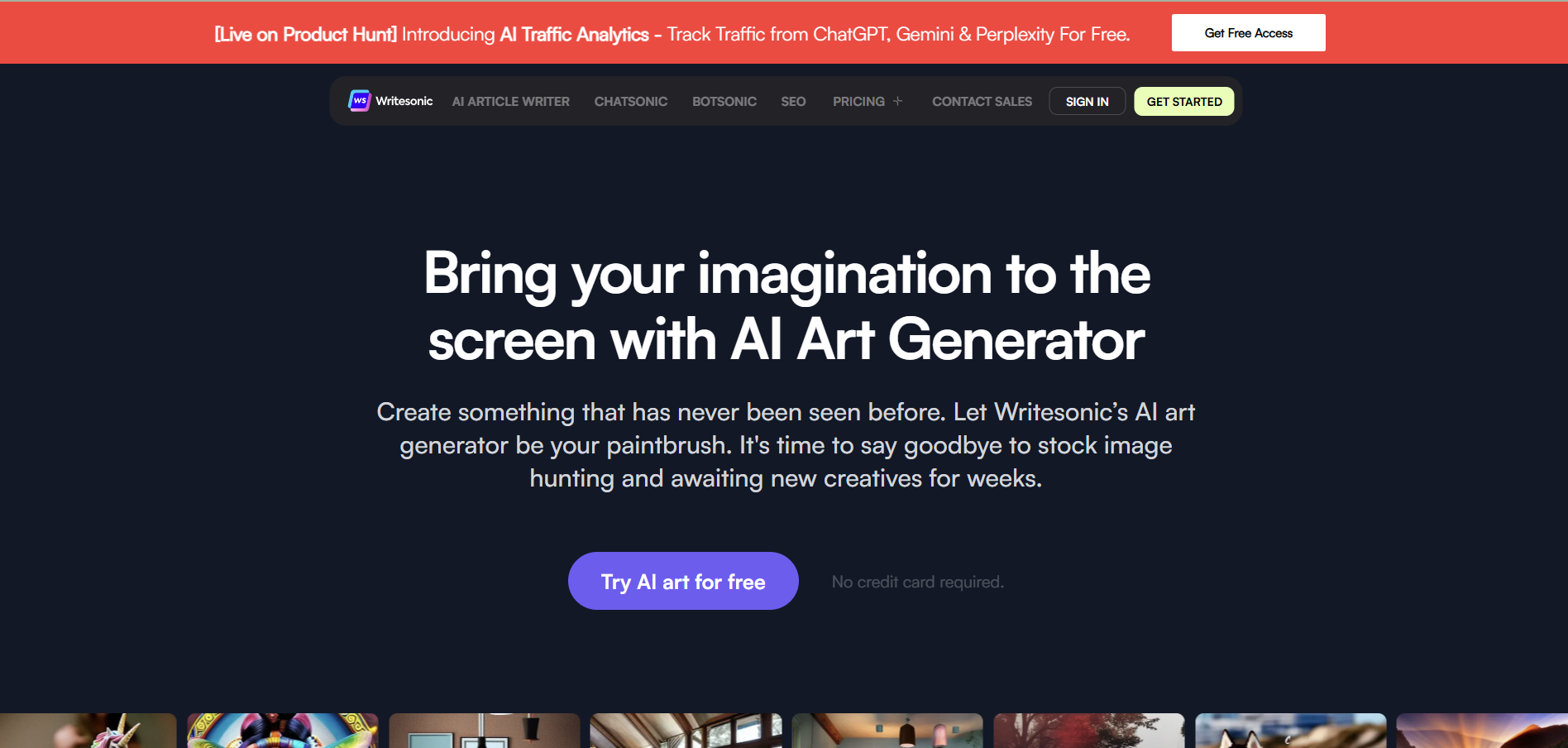
photosonic.ai excels at converting text prompts into vivid, high-quality generated images. It is designed for digital artists and marketers who require speed and creative flexibility. With a robust template library and intuitive editing tools, photosonic.ai helps users generate visually compelling content that enhances digital campaigns and artistic projects.
Key Features
Key functionalities include:
AI-Powered Synthesis : Transforms text into intricate visuals.
Diverse Template Options : Offers a broad selection of designs.
Intuitive Editing Suite : Facilitates quick and precise adjustments.
High-Resolution Outputs : Ensures professional image quality.
Pros & Cons
Evaluating its performance:
-
Pros :
Exceptional image quality.
Fast processing speeds.
Wide range of templates.
User-friendly interface.
-
Cons :
Premium pricing for advanced features.
Limited offline support.
Occasional performance variability.
Advanced customization may require training.
Who Should Use photosonic.ai?
Best suited for:
Professional photographers enhancing digital portfolios.
Graphic designers creating innovative visuals.
Content creators needing high-quality images.
Digital marketers producing engaging campaigns.
If you are searching for deep-learning integrations, consider the recommended FusionBrain AI Alternatives.
3. getimg.ai
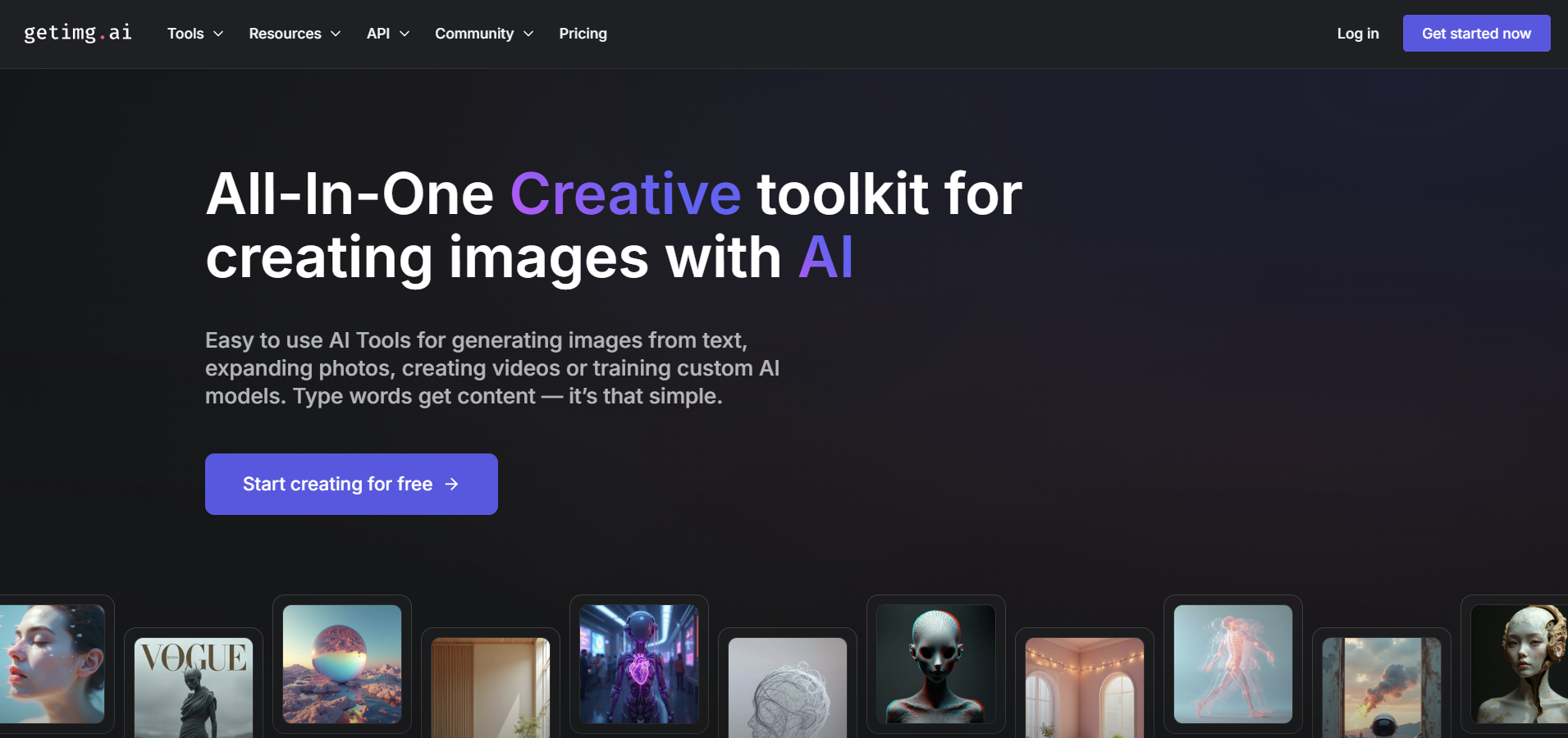
getimg.ai is a high-resolution image generation platform designed for speed, precision, and producing realistic images. It targets digital illustrators and social media managers who require detailed and customizable graphics. With its intuitive controls and real-time editing capabilities, getimg.ai helps users rapidly refine images to match their creative vision and project demands.
Key Features
Key strengths include:
Dynamic Template Options : Offers various design foundations.
Real-Time Editing Tools : Enables immediate visual adjustments.
High-Resolution Engine : Produces crisp, detailed outputs.
Customizable Settings : Provides extensive control over image elements.
Pros & Cons
A balanced review shows:
-
Pros :
Fast image generation.
Intuitive interface.
Highly customizable outputs.
Excellent resolution quality.
-
Cons :
Premium pricing for advanced features.
Limited offline functionality.
Occasional processing lags.
Advanced tools require familiarization.
Who Should Use getimg.ai?
Ideal for:
Digital illustrators seeking detailed artwork.
Social media managers wanting engaging visuals.
Marketing teams requiring high-quality graphics.
Creative freelancers looking for versatile design solutions.
4. designify.ai
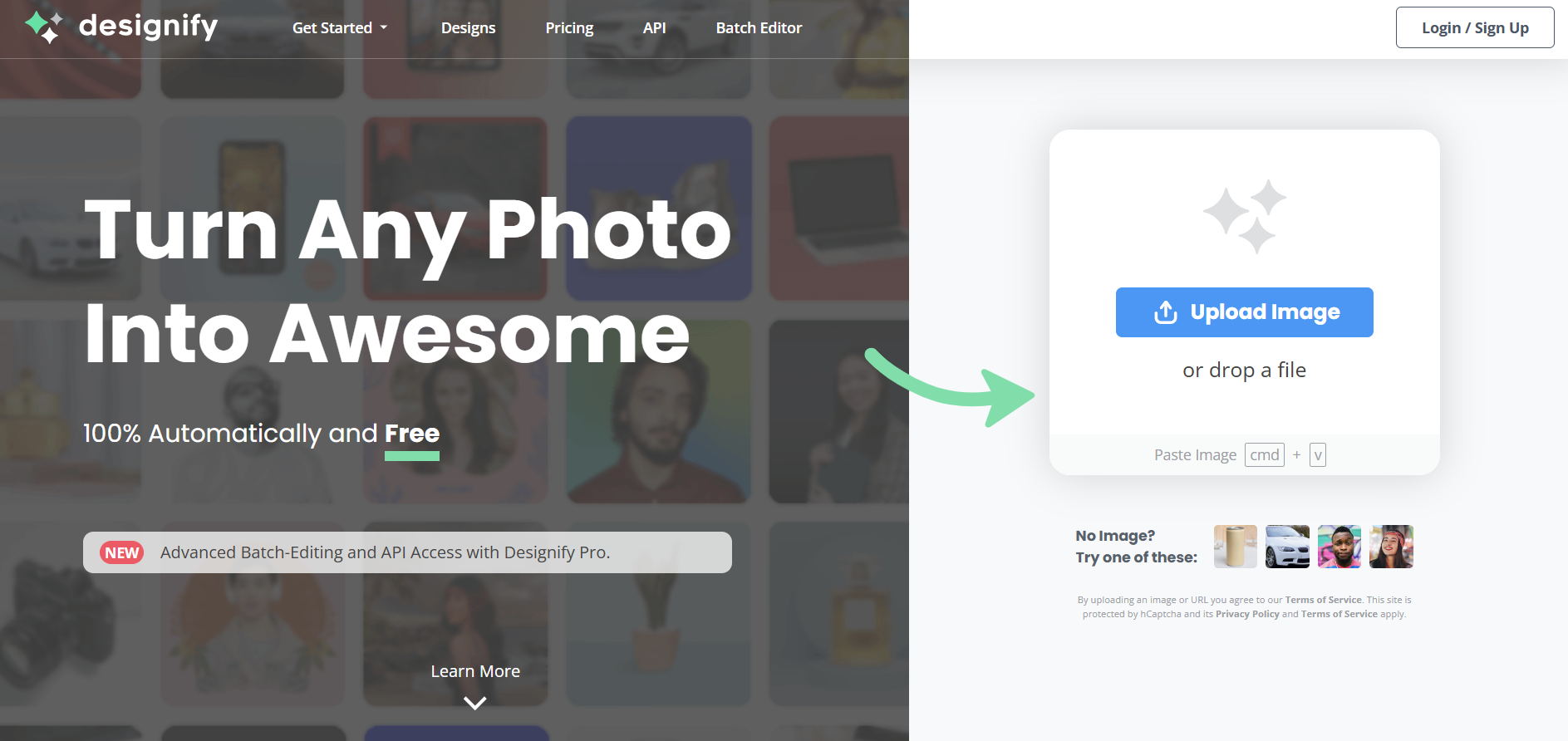
designify.ai streamlines the content creation process by merging AI automation with robust manual editing. It is tailored for users who need fast, customizable visuals that can be refined to meet project needs. designify.ai offers an extensive library of templates and intuitive controls, making it perfect for small businesses and freelance creatives.
Key Features
Essential functionalities include:
Automated Design Generation : Quickly transforms text into visuals.
Diverse Template Collection : Provides multiple customizable designs.
Advanced Editing Controls : Enables granular customization.
Seamless Export Options : Supports various file formats.
Pros & Cons
Review reveals:
-
Pros :
Efficient design automation.
Wide template selection.
High customization potential.
User-friendly interface.
-
Cons :
Subscription required for full access.
Limited offline functionality.
Occasional processing delays.
Advanced features can be complex for beginners.
Who Should Use designify.ai?
Best for:
Entrepreneurs needing rapid visuals.
Freelance creatives seeking versatile tools.
Marketing professionals requiring on-brand images.
Small business owners looking for cost-effective solutions.
5. fusionbrain.ai

fusionbrain.ai is a robust platform that leverages advanced AI tools to produce high-resolution, detailed images. It is aimed at creative professionals who demand precision and extensive customization. Fusionbrain.ai interprets text prompts to generate intricate visuals, supported by powerful editing tools that ensure every detail is refined to perfection.
Key Features?
Its key tools include:
Intelligent Text Interpretation : Converts descriptive prompts into detailed images.
Extensive Asset Library : Offers numerous design elements and templates.
Advanced Editing Suite : Provides precise control over every detail.
High-Speed Rendering Engine : Ensures rapid output without quality loss.
Pros & Cons
A balanced evaluation shows:
-
Pros :
High-resolution, detailed outputs.
Robust customization capabilities.
Fast processing speeds.
Intuitive interface.
-
Cons :
Higher subscription fees.
Limited free trial period.
Occasional system lag.
Complexity for beginners.
Who Should Use fusionbrain.ai?
Ideal for:
Professional creatives needing intricate details.
Design studios managing complex projects.
Digital content producers seeking high-quality imagery.
Tech-savvy hobbyists exploring advanced design.
6. hotpot.ai
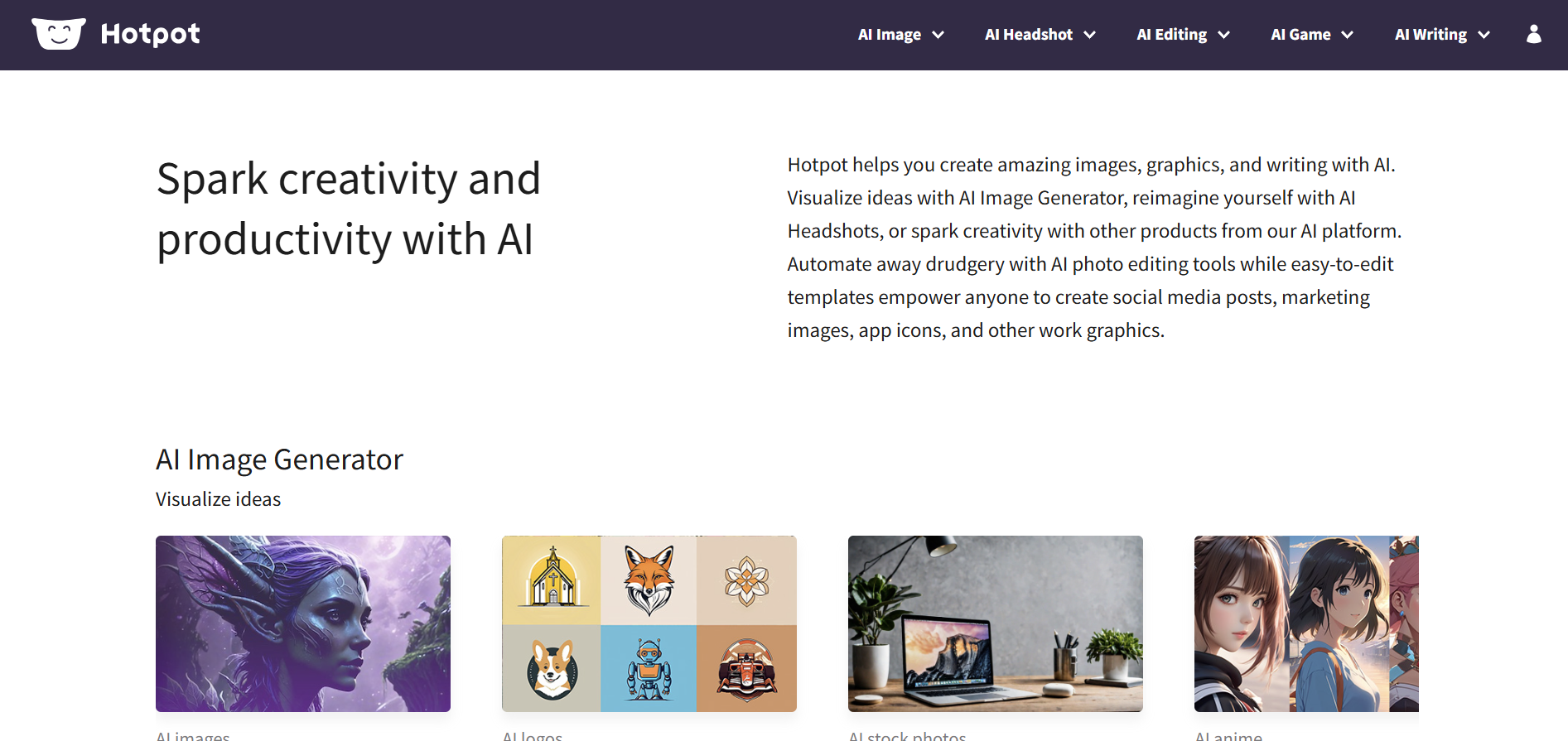
hotpot.ai is a dynamic AI-driven platform that transforms text prompts into creative visuals, including social media posts. It targets digital artists, marketers, and social media creators who need rapid, high-quality image generation. With a broad template library and real-time editing, hotpot.ai allows users to tailor images to their exact creative vision quickly.
Key Features
Key capabilities include:
Intelligent Prompt Conversion : Transforms text into vivid images.
Diverse Template Library : Offers numerous customizable designs.
Real-Time Editing : Enables immediate modifications.
High-Resolution Outputs : Ensures professional-grade visuals.
Pros & Cons
Review reveals:
-
Pros :
Easy-to-use interface.
Rapid image generation.
Wide template selection.
Consistent output quality.
-
Cons :
Subscription-based pricing.
Limited offline functionality.
Occasional processing delays.
Advanced features require practice.
Who Should Use hotpot.ai?
Ideal for:
Graphic designers needing rapid prototyping.
Digital marketers requiring engaging visuals.
Social media creators producing eye-catching content.
Creative hobbyists exploring digital art.
7. artsmart.ai
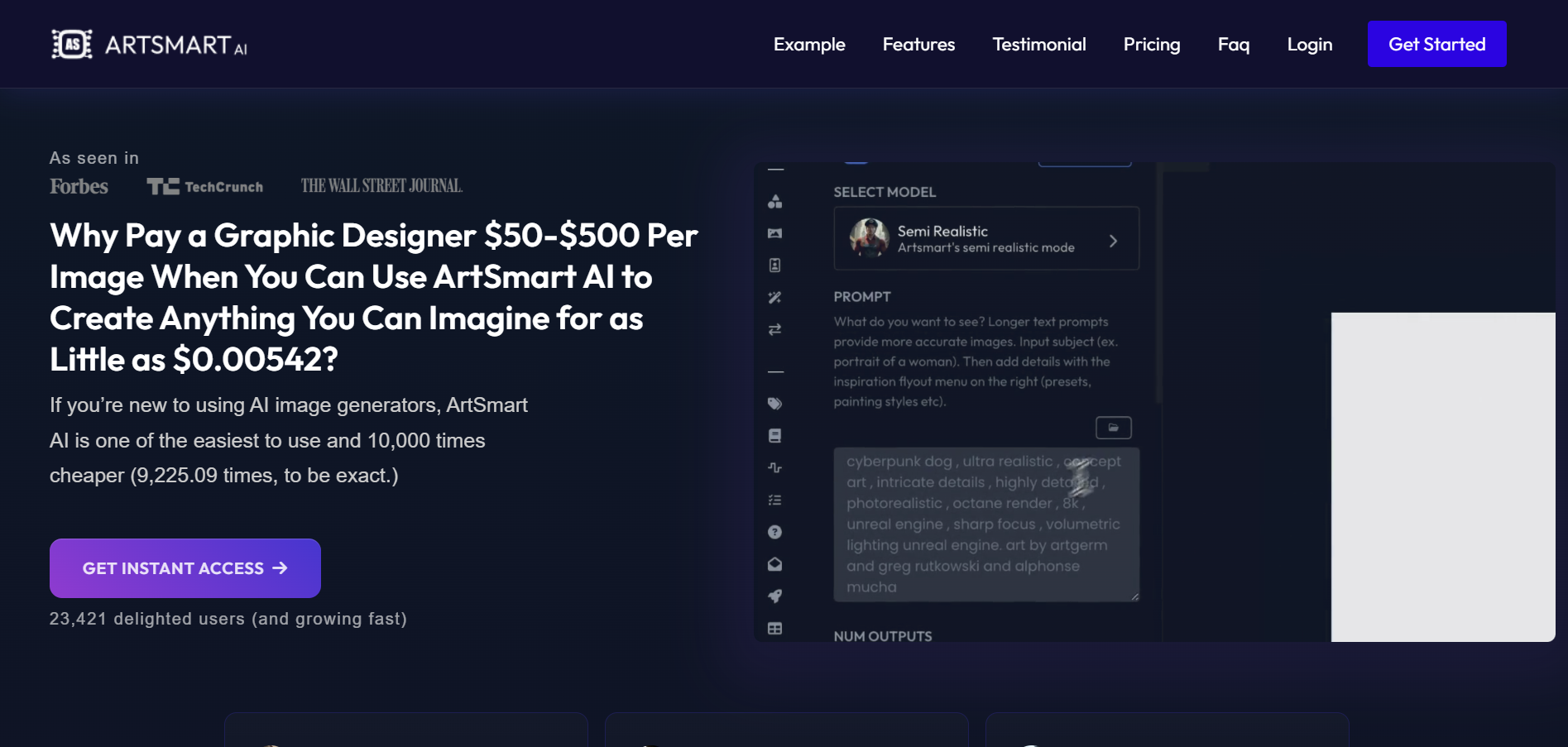
artsmart.ai is an advanced AI tool that transforms text prompts into striking, artistic visuals. It is designed for creative professionals who demand innovative image generation with a strong artistic flair. With extensive artistic filters, customizable templates, and real-time editing, artsmart.ai produces unique visuals ideal for advertising and digital art projects.
Key Features
Its features include:
Innovative Artistic Filters : Impart creative effects to images.
Customizable Templates : Offer adaptable design foundations.
Real-Time Editing : Allows instant modifications.
High-Definition Outputs : Produces crisp, professional visuals.
Pros & Cons
-
Pros :
Exceptional image quality.
Wide range of artistic effects.
Extensive customization options.
Fast processing speed.
-
Cons :
Premium pricing tiers.
Steep learning curve for beginners.
Limited free trial options.
Occasional performance variability.
Who Should Use artsmart.ai?
Best for:
Visual artists seeking unique effects.
Advertising professionals creating standout visuals.
Digital illustrators demanding high detail.
Content creators requiring professional imagery.
8. designs.ai
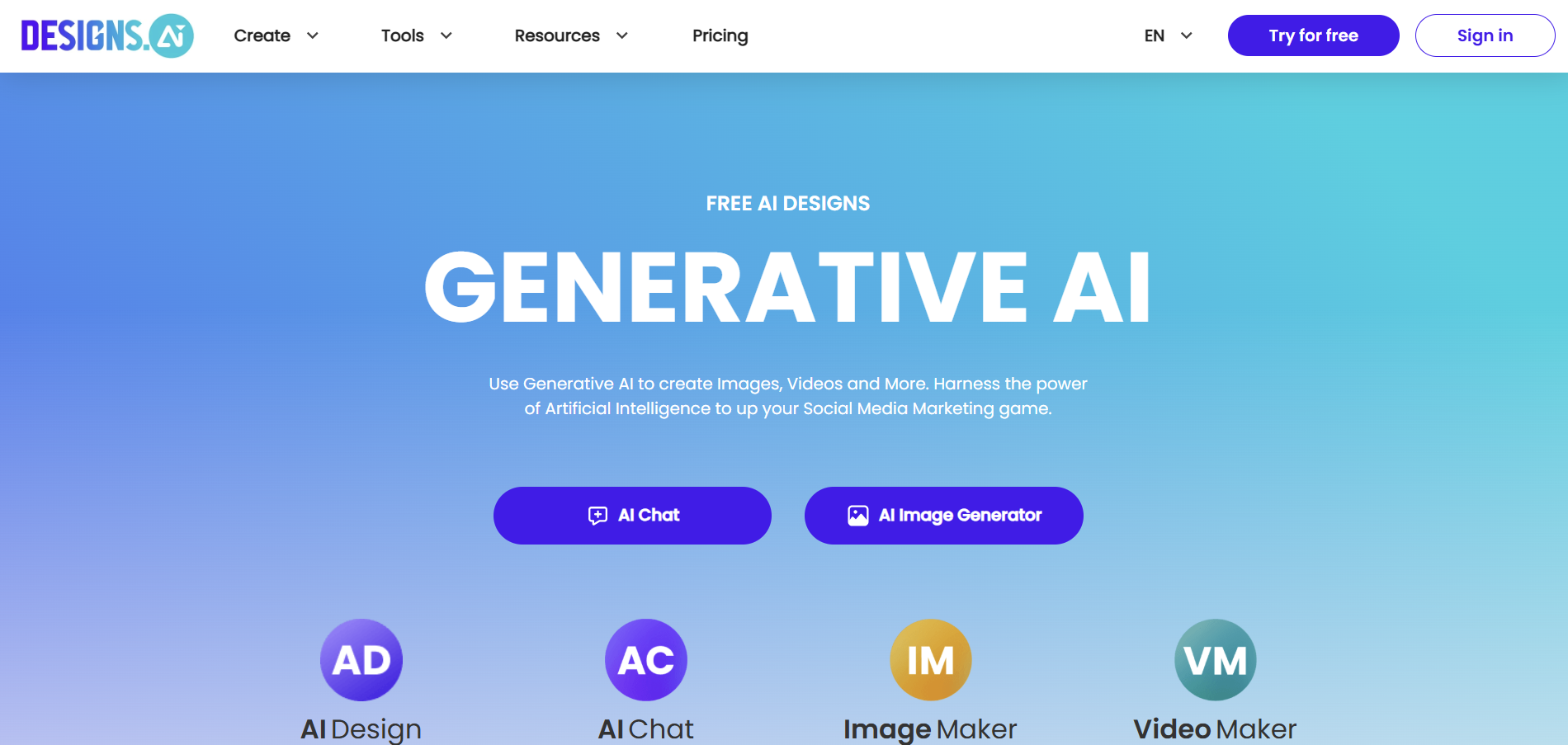
designs.ai is an all-in-one design platform that converts text prompts into polished visuals. It combines automated design generation with manual editing to offer a balanced creative process. Perfect for corporate creatives and freelance designers, designs.ai delivers professional-grade outputs quickly through its extensive template library and intuitive interface.
Key Features
Key functionalities include:
Automated Visual Creation : Quickly generates designs from text.
Extensive Template Library : Provides a broad array of design layouts.
Intuitive Editing Tools : Simplifies customization.
Multiple Export Options : Supports various file formats.
Pros & Cons
-
Pros :
Fast design output.
Comprehensive template selection.
User-friendly interface.
Flexible export options.
-
Cons :
Subscription required for full features.
Limited offline access.
Occasional system lags.
Fewer collaboration tools.
Who Should Use designs.ai?
Ideal for:
Freelance designers needing quick turnarounds.
Corporate teams producing on-brand visuals.
Digital marketers requiring engaging graphics.
Startups seeking cost-effective design solutions.
9. zmo.ai
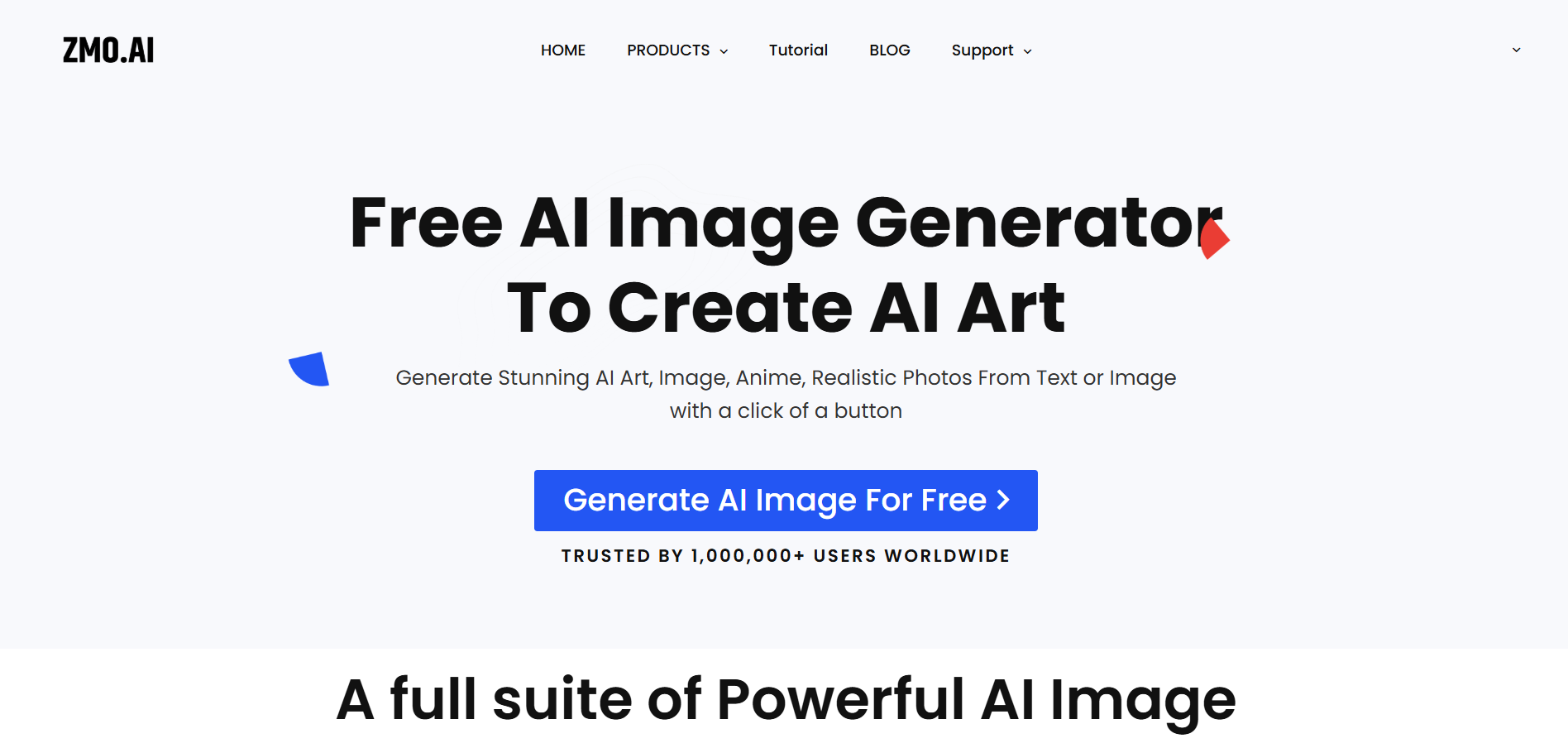
zmo.ai is an efficient image generation tool known for its speed and extensive customization. It is built for professionals who require rapid, high-quality visuals with detailed creative control. zmo.ai offers a rich library of templates and real-time editing features that make it ideal for a variety of digital art and corporate branding projects.
Key Features?
Key functionalities include:
Instant Image Generation : Quickly converts text into visuals.
Rich Template Library : Provides diverse design options.
Advanced Customization Tools : Allows precise adjustments.
Responsive Real-Time Editing : Supports immediate modifications.
Pros & Cons
-
Pros :
Fast processing speeds.
Extensive design options.
High customization flexibility.
User-friendly interface.
-
Cons :
Premium features require subscription.
Limited offline access.
Occasional processing delays.
Learning curve for advanced functions.
Who Should Use zmo.ai?
Ideal for:
Digital artists seeking detailed designs.
Marketing creatives needing dynamic visuals.
Freelance designers looking for versatile options.
Corporate professionals requiring consistent imagery.
10. fluxaiimagegenerator.com
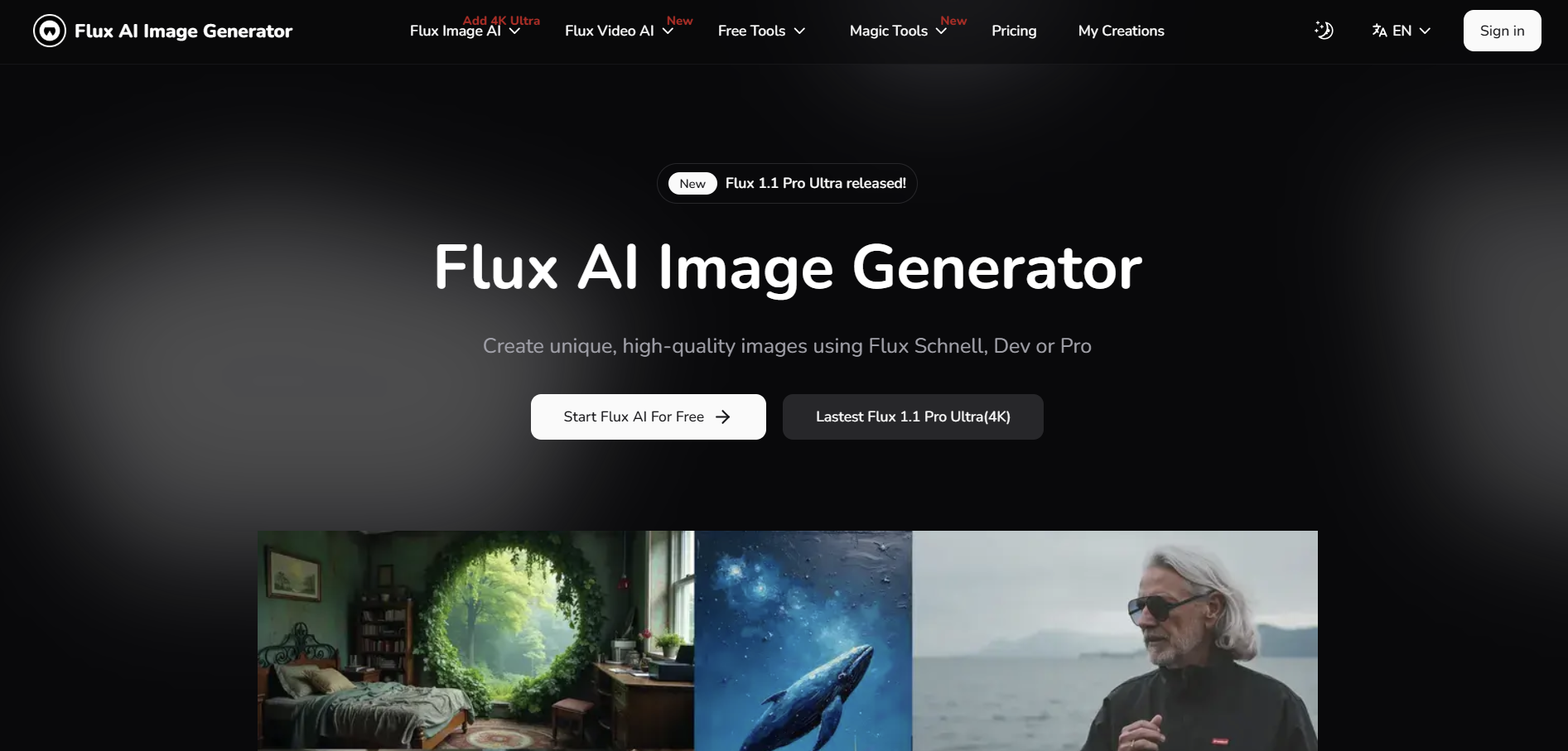
fluxaiimagegenerator.com offers a versatile solution for AI-driven image creation that balances simplicity with advanced functionality. It is designed for users who need rapid, professional-quality visuals without a steep learning curve. The platform features an extensive template library and real-time editing tools that streamline creative workflows for both commercial and personal projects.
Key Features
Key functionalities include:
Simplified Design Interface : Ensures ease of use.
Diverse Template Collection : Offers multiple customizable designs.
Robust AI Processing : Produces detailed, high-quality images.
Efficient Export Options : Supports various file formats.
Pros & Cons
-
Pros :
User-friendly interface.
Wide variety of templates.
Consistently high-quality outputs.
Fast processing speeds.
-
Cons :
Premium features require subscription.
Limited offline functionality.
Occasional rendering inconsistencies.
Fewer advanced customization options.
Who Should Use Ideogram
Ideal for:
Freelance creatives needing efficient design tools.
Marketing professionals requiring reliable visuals.
Small business owners seeking versatile design solutions.
Content creators looking for dynamic imagery.
Conclusion
In conclusion, the AI-driven image generation landscape offers a diverse range of alternatives to Ideogram. This article has detailed Ideogram’s core functionalities—including advanced text-to-image conversion, a comprehensive template library, real-time editing, and intelligent AI algorithms—and weighed its pros and cons. We have also examined why creative professionals love Ideogram and the reasons to explore alternative platforms that offer unique pricing, specialized features, and enhanced customization.
Whether you are a graphic designer, digital marketer, or content creator, selecting the right AI tool can dramatically enhance your creative workflow. Consider your project needs and budget when choosing among these top alternatives to ensure exceptional visual results and a seamless design experience.
FAQs On Ideogram Alternatives
1. What is Ideogram used for?
It converts text prompts into high-quality, artistic images using advanced AI, serving digital artists, marketers, and creative professionals.
2. How does Ideogram differ from its alternatives?
Ideogram offers robust text-to-image conversion and extensive templates, while alternatives provide varied pricing and specialized features for specific creative needs.
3. Is Ideogram beginner-friendly?
Yes. Its intuitive interface and comprehensive tutorials make it accessible for users at all skill levels.
4. Can Ideogram be used for commercial projects?
Absolutely. It produces professional-grade visuals suitable for marketing, branding, and diverse creative applications.
5. Are free trials available for Ideogram and its alternatives?
Many platforms offer limited free trials or basic versions, though full access to advanced features typically requires a subscription.